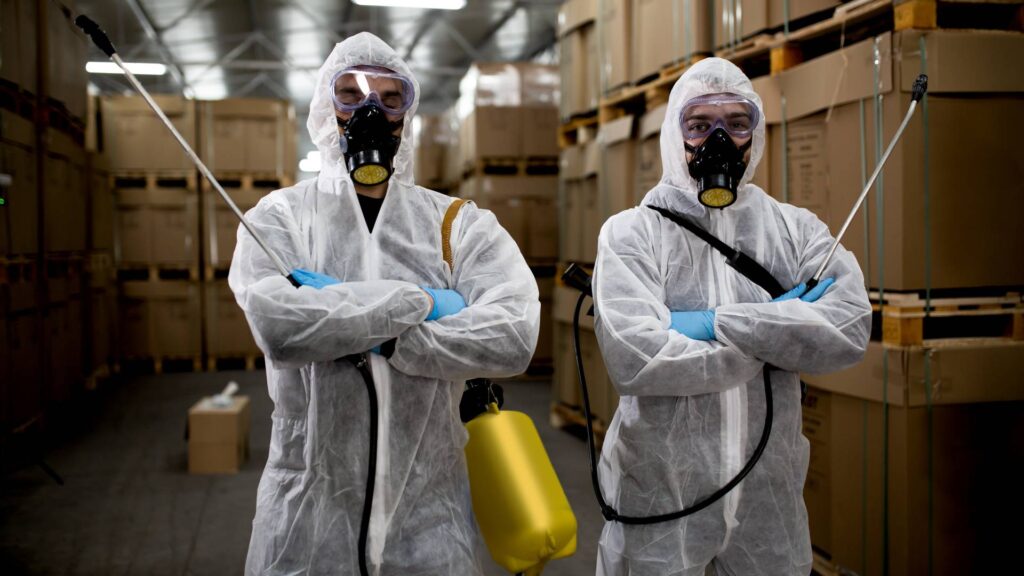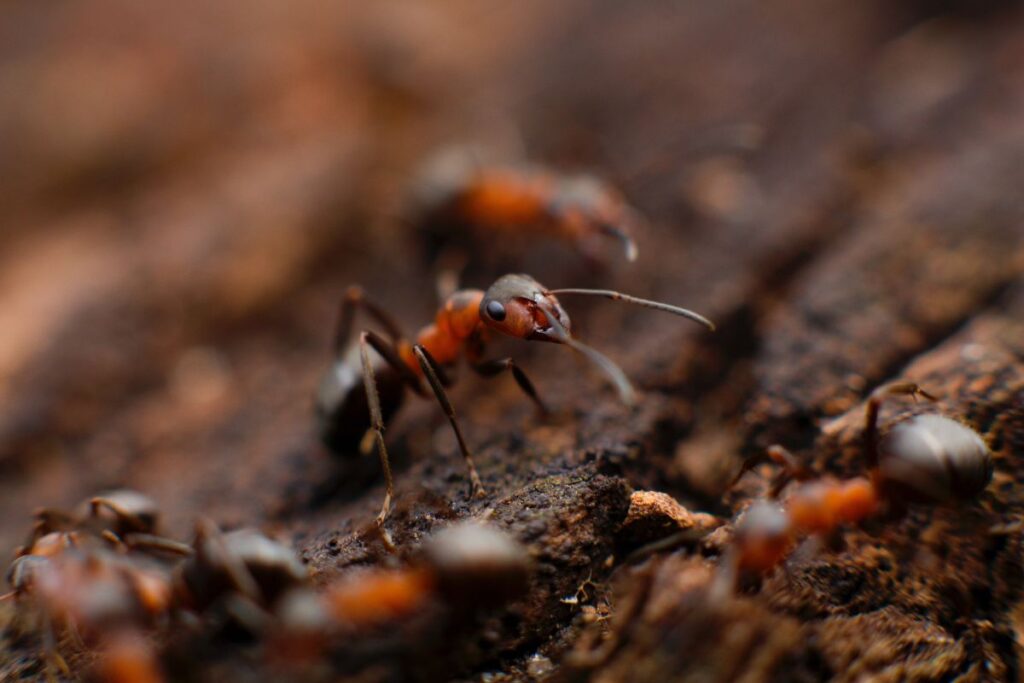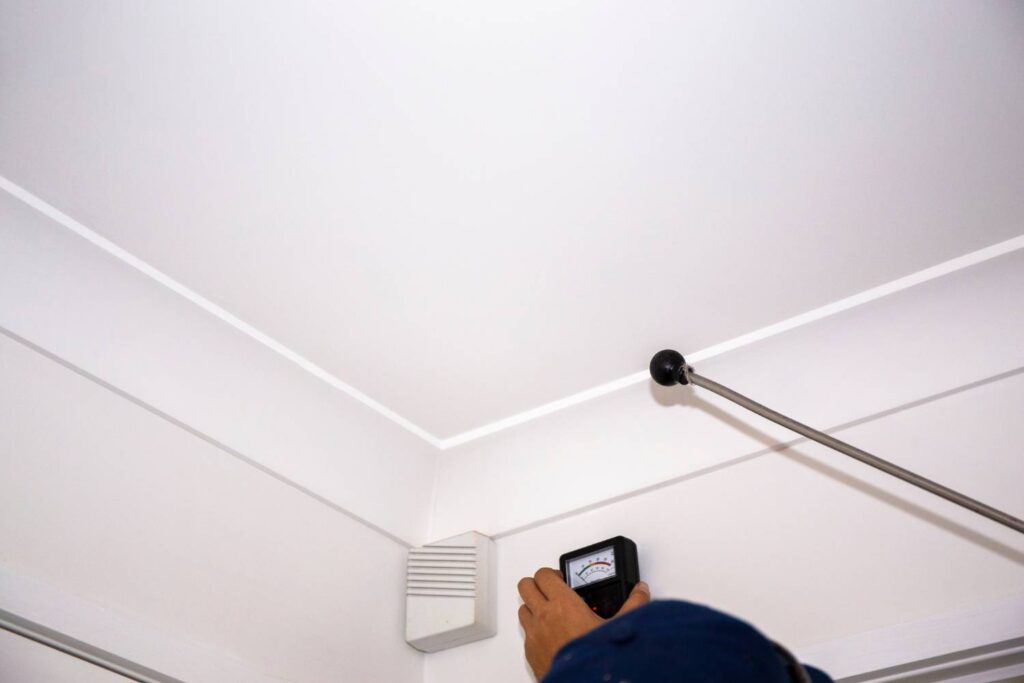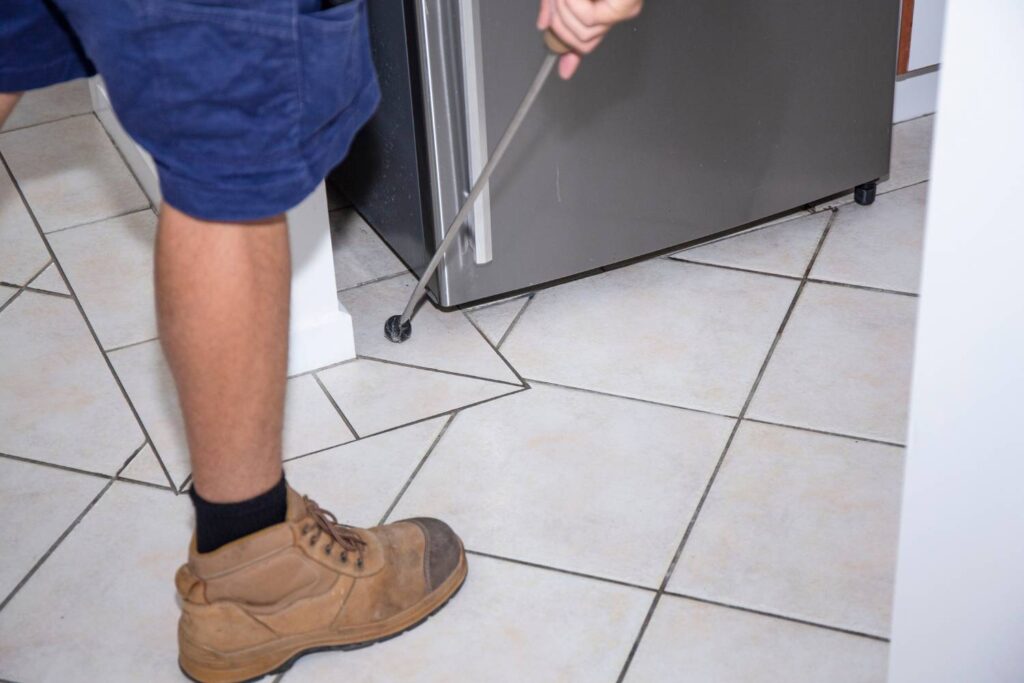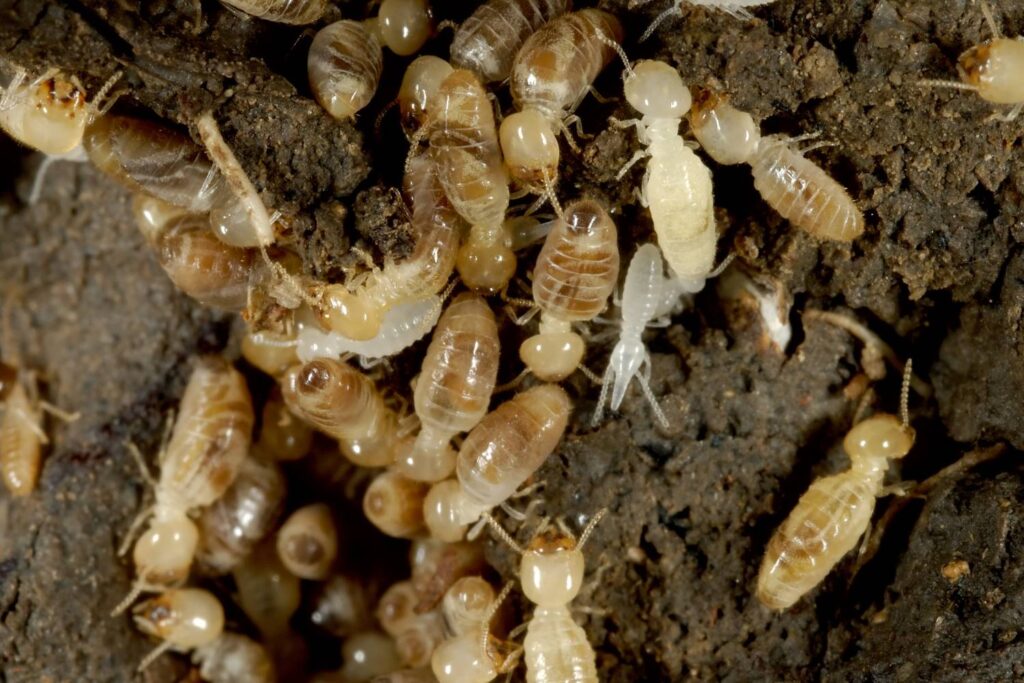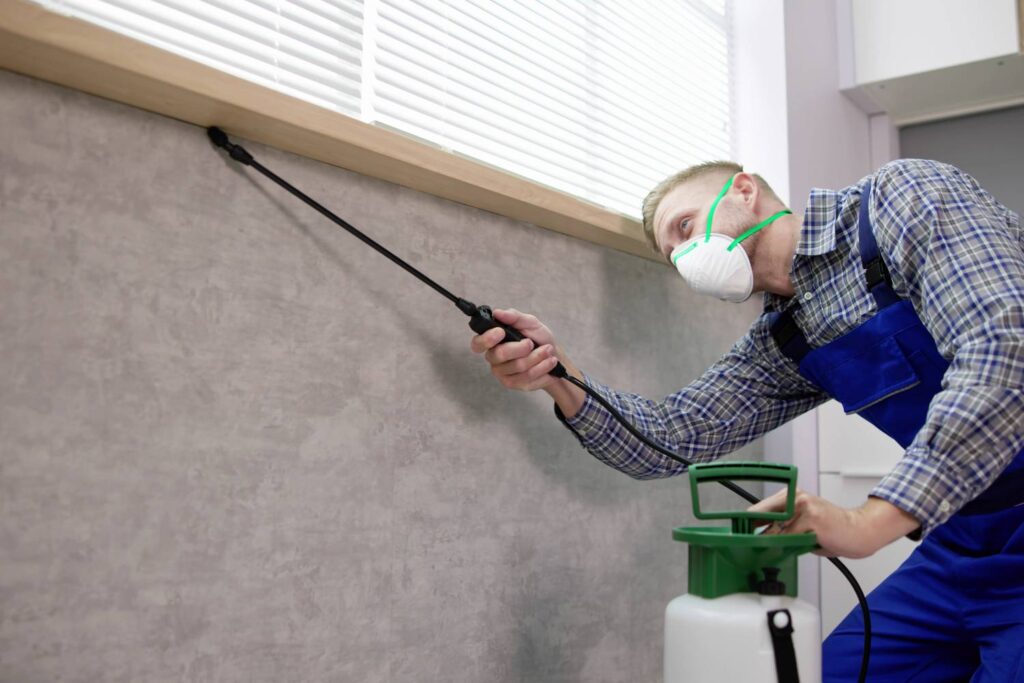Choosing an exemplary pest control service is critical for homeowners and businesses. It's not just about eliminating unwelcome guests; it's about doing so safely, effectively, and environmentally consciously. With the myriad options available, navigating the pest control industry can feel overwhelming.
This blog aims to demystify the process, offering insights into what makes a pest control service stand out, the importance of tailored solutions, and the key factors to consider before making a choice. Whether battling a one-time infestation or looking for long-term prevention, understanding your options is the first step to living in a pest-free environment.
Evaluating the expertise of technicians to the safety of treatment methods and the sustainability of their practices, we'll guide you through the essential criteria to help ensure that you select a pest control service that not only meets but exceeds your expectations.
Understanding Your Pest Control Needs
Effective pest management is crucial for maintaining a healthy living environment. Integrated Pest Management (IPM) is a comprehensive approach that combines various methods to manage pests economically and with minimal risk to people, pets, and the environment. Here's a synthesis of critical insights from the provided resources to help you effectively understand and address your pest control needs.
Integrated Pest Management (IPM)
IPM is a strategy that emphasises using multiple methods to control pests. This approach is not only about applying pesticides; it involves understanding the biology and behaviour of pests, monitoring pest populations, and employing cultural, physical, biological, and chemical control methods. The goal is to reduce pest numbers to an acceptable level while minimising the impact on non-target organisms and the environment.
- Prevention: The first line of defence against pests involves cultural and physical control practices to prevent pest problems before they occur. This includes selecting resistant plant varieties, proper site selection, sanitation, and using physical barriers.
- Accurate Identification: Knowing the pest you are dealing with is crucial for adequate control. This involves understanding the pest's life cycle, preferred hosts, and the type of damage it causes.
- Monitoring: Regular monitoring helps determine the necessity and timing of control measures. It's essential to recognise that the presence of pests does not always indicate a problem.
- Setting Thresholds: IPM does not aim to eliminate pests but rather to keep their numbers below a level where they cause unacceptable damage. Understanding the tolerance levels for different pests is critical to making informed management decisions.
- Take Action: When action is necessary, IPM promotes the use of the most effective, least-risk options. This may include biological controls, such as beneficial insects, and chemical controls, which prefer products specific to the pest and less harmful to non-target organisms.
Selecting Pest Control Services
When professional pest control services are needed, especially for complex or dangerous pest issues like termites, bed bugs, or rodents, selecting a reputable pest management professional (PMP) is essential. Here are some tips for choosing a pest control service:
- Licensing and Regulations: Ensure the company is licensed and follows state regulations. In North Carolina, pest control companies must have a licensed individual on staff, and employees must carry identification cards issued by the Department of Agriculture & Consumer Services.
- Pest Control Plan: A reputable PMP will offer a detailed plan tailored to your pest problem, including the methods and products used. They should also provide information on the expected outcomes and any safety measures to consider.
- Integrated Approach: Look for companies that employ an integrated approach to pest management, focusing on chemical treatments, preventive measures, and non-chemical controls.
- Communication and Service Contracts: Effective communication is critical to a successful pest management plan. Ensure the company will answer your questions and explain its approach in detail. Read service contracts carefully to understand the services provided, treatment specifications, costs, and warranties.
Researching Pest Control Services
The pest control services market is undergoing significant growth and transformation, driven by increasing urbanisation, health and hygiene awareness, and adopting eco-friendly pest control solutions. Here's a synthesis of insights gathered from various sources on the current trends, opportunities, and challenges in the pest control services industry.
Market Growth And Trends
The global pest control services market is experiencing robust growth, with projections indicating a continued upward trajectory through 2030. This growth is fueled by the escalating demand for residential and commercial pest control solutions to combat the rise in pest-related diseases and maintain health and hygiene standards. The introduction of organic pesticides and the shift towards bio-based pest control methods are aiding market expansion, addressing consumer concerns about the toxicity of chemical pesticides and their adverse health impacts.
- Evolving Pest Control Needs: Urbanisation and the consequent increase in food sources and habitats for pests like rodents, cockroaches, and mosquitoes drive the demand for pest control products and services. Rapid urban migration exacerbates this trend, especially in developing countries, leading to denser populations and heightened pest activity.
- Sector-Specific Services: The pest control industry is witnessing a shift towards designing services tailored to specific sectors, particularly the food and beverage industry. This includes pest control programs that comply with stringent health and safety standards, such as HACCP, BRC, AIB, and FEMAS requirements.
- Technological Advancements: Adopting new technologies, including drones for pest control inspections and digital real-time communication and monitoring tools, enhances service efficiency and customer satisfaction. These technologies enable pest control professionals to access hard-to-reach areas and provide faster, more effective services.
Market Challenges
While the pest control services market is growing, it faces challenges related to the toxicity of pesticides and regulatory constraints. There is a growing concern over the health issues caused by toxic pesticides, prompting a shift towards less harmful, bio-based alternatives. However, the transition is challenging, as the development and approval of new, eco-friendly pest control solutions are subject to stringent regulatory processes.
Regional Insights
North America holds the largest share of the pest control services market, attributed to the presence of major industry players and the high demand for pest control solutions. However, Europe and Asia are also emerging as significant markets, with increasing urbanisation and awareness of pest-related health risks driving demand for pest control services.
Future Outlook
The pest control services market is poised for continued growth, emphasising eco-friendly and technologically advanced solutions. Companies increasingly focus on organic pesticides and integrating digital tools to improve service delivery and customer experience. As the industry evolves, there will be a greater need for customised services tailored to specific industries and regions, offering ample opportunities for market expansion and innovation.
Evaluating Pest Control Methods
Evaluating pest control methods is essential for ensuring effective management and mitigation of pest-related issues in various environments. This comprehensive approach involves understanding the principles of pest control, the effectiveness of different pest management strategies, the impact of environmental conditions, and the utilisation of technology and integrated pest management (IPM) practices. Here's a synthesis of insights gathered from various sources on evaluating pest control methods.
Principles Of Pest Control
The foundation of effective pest control lies in accurately identifying pests, understanding their behaviour and life cycles, and determining the appropriate level of intervention. Pest control aims to prevent, suppress, or eradicate pests, depending on the situation and the threshold levels of pest populations that can be tolerated. Regular monitoring or scouting of pest activity is crucial for timely and effective pest management decisions.
Integrated Pest Management (IPM)
IPM is a holistic approach that integrates various pest control tactics to reduce pest damage to acceptable levels with minimal harm to non-target organisms and the environment. This strategy emphasises using multiple control methods, including biological, cultural, mechanical, and chemical controls, tailored to specific pest problems. IPM also considers natural pest control forces, such as climate, natural enemies, and geographic barriers, leveraging them whenever possible to achieve effective pest management.
Measuring Effectiveness And Impact
Evaluating the effectiveness and impact of pest control methods involves several key components:
- Technology and Monitoring: Electronic monitoring and tracking technologies provide valuable data on pest activity levels and help identify areas requiring additional attention. This information is critical for assessing the success of pest control treatments and making necessary adjustments.
- Environmental Conditions: Factors such as temperature, humidity, and weather significantly influence pest behaviour and the efficacy of pest control measures. Understanding these environmental impacts is essential for developing and implementing effective pest management strategies.
- Pest Control Manufacturing: For manufacturers of pest control products, measuring effectiveness involves considering factors like the type of pest, environmental conditions, and the type of pesticide used. It's also essential to evaluate the method and timing of pesticide application, as well as the expertise of pest control personnel.
- Standard Metrics: Common metrics for evaluating pest control effectiveness include pest population density, pest activity, damage caused by pests, pesticide use, customer satisfaction, and compliance with regulations. Regular evaluations and adjustments based on these metrics are crucial for ensuring the success of pest control measures.
Conclusion
Choosing the exemplary pest control service is crucial for homeowners and businesses, as it involves a safe, effective, and environmentally conscious approach to eliminating pests. Integrated Pest Management (IPM) is a comprehensive approach that combines various methods to manage pests economically and with minimal risk to people, pets, and the environment. It involves cultural and physical control practices, accurate identification, regular monitoring, setting thresholds, and taking action when necessary.
When selecting a pest control service, it is essential to ensure the company is licensed and follows state regulations. A detailed pest control plan, including methods and products, expected outcomes, and safety measures, should be provided. An integrated approach to pest management, focusing on preventive measures and non-chemical controls, is also essential. Effective communication and service contracts are also crucial for a successful pest management plan.
In summary, understanding your pest control needs, selecting a reputable pest management professional, and evaluating the technicians' expertise are essential to selecting an exemplary pest control service.
The pest control services market is experiencing significant growth due to urbanisation, health and hygiene awareness, and adoption of eco-friendly solutions. The global market is projected to continue upward through 2030, driven by the increasing demand for residential and commercial pest control solutions. The introduction of organic pesticides and the shift towards bio-based methods address consumer concerns about chemical pesticides' toxicity. Urbanisation and increased food sources for pests like rodents, cockroaches, and mosquitoes drive the demand for pest control products and services. The industry is also witnessing a shift towards designing services tailored to specific sectors, particularly the food and beverage industry. Technological advancements, such as drones for pest control inspections and digital real-time communication and monitoring tools, enhance service efficiency and customer satisfaction.
However, the market faces challenges related to the toxicity of pesticides and regulatory constraints. The transition to less harmful, bio-based alternatives is subject to stringent regulatory processes. The market is poised for continued growth, emphasising eco-friendly and technologically advanced solutions.
Evaluating pest control methods involves understanding the principles of pest control, the effectiveness of different pest management strategies, the impact of environmental conditions, and the utilisation of technology and integrated pest management (IPM) practices.
Content Summary
- Choosing an exemplary pest control service is crucial for homeowners and businesses in Australia.
- It's not just about eliminating pests; it's about doing so safely and environmentally consciously.
- With numerous options available, navigating the pest control industry can be overwhelming.
- This blog aims to simplify the process and offer insights into selecting the best service.
- Understanding your pest control needs is the first step to living pest-free.
- Integrated Pest Management (IPM) combines various methods to manage pests effectively.
- Prevention is critical, involving cultural and physical control practices.
- Accurate identification of pests is crucial for effective control measures.
- Regular monitoring helps determine the necessity of control measures.
- IPM aims to keep pest numbers below unacceptable levels while minimising environmental impact.
- Effective pest management is crucial for maintaining a healthy living environment.
- Choosing a reputable pest management professional (PMP) is essential for complex issues.
- Ensure the company is licensed and follows state regulations.
- A detailed pest control plan tailored to your specific problem is necessary.
- Look for an integrated approach to pest management that includes preventive measures.
- Effective communication and service contracts are vital for success.
- The global pest control services market is experiencing robust growth.
- Demand is rising for residential and commercial pest control solutions.
- Organic pesticides and bio-based methods are gaining popularity.
- Urbanisation leads to increased pest activity, driving the demand for pest control services.
- The industry is shifting towards sector-specific services tailored to various industries.
- Technological advancements, including drones, enhance service efficiency.
- Challenges include the toxicity of pesticides and regulatory constraints.
- Concerns over health issues drive the shift towards eco-friendly solutions.
- North America holds the largest share of the pest control services market.
- Europe and Asia are emerging as significant markets.
- The future outlook emphasises eco-friendly and technologically advanced solutions.
- Customised services tailored to specific industries and regions are becoming more critical.
- Evaluating pest control methods is essential for effective management.
- Accurate pest identification and understanding of behaviour are fundamental.
- Pest control aims to prevent, suppress, or eradicate pests based on tolerance levels.
- Integrated Pest Management (IPM) combines multiple control tactics.
- Electronic monitoring provides valuable data on pest activity levels.
- Environmental conditions significantly influence pest behaviour.
- Pest control effectiveness also depends on manufacturing processes.
- Standard metrics include pest population density and customer satisfaction.
- Regular evaluations are crucial for ensuring successful pest control measures.
- Choosing an exemplary pest control service is a significant decision.
- It's about more than just eliminating pests: safety and environmental consciousness.
- Understanding Integrated Pest Management (IPM) is essential for effective pest control.
- Prevention, accurate identification, and monitoring are critical aspects of IPM.
- Effective communication with pest control professionals is vital.
- Licensing and regulations ensure the legitimacy of pest control services.
- Detailed pest control plans should be tailored to specific pest issues.
- An integrated approach to pest management considers various control methods.
- Technological advancements in pest control enhance service efficiency.
- The pest control services market is growing globally, driven by increasing demand.
- Challenges include the toxicity of pesticides and regulatory hurdles.
- Regional markets like North America, Europe, and Asia show significant growth.
- The future of pest control emphasises eco-friendly solutions and technological advancements.
Frequently Asked Questions
Selecting the exemplary pest control service is crucial for effectively eliminating pests while ensuring safety, environmental consciousness, and long-term prevention.
Factors to consider include the company's expertise, safety measures, environmental friendliness, tailored solutions, and effectiveness of treatments.
IPM is a comprehensive approach to pest control that combines multiple methods while minimising risks to people, pets, and the environment. It's important because it provides sustainable solutions and reduces reliance on chemical treatments.
Ensure the company is licensed, follows state regulations, offers detailed pest control plans, communicates effectively, and has positive reviews or testimonials from previous customers.
A good pest control plan should include a thorough inspection, identification of pests, tailored treatment methods, information on expected outcomes, safety measures, and ongoing monitoring.

